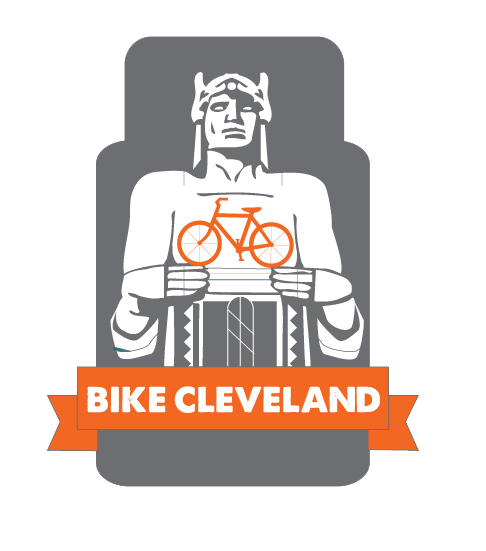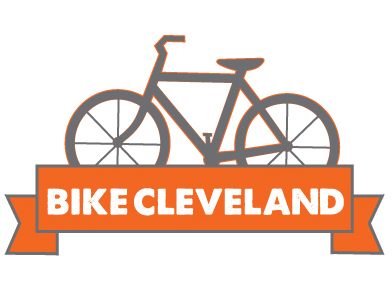Bike infrastructure as an economic development tool: the case for protected bike lanes

In this summer blog series, we will be examining the intersectionality of multiple issues related to mobility and the need to expand protected bike infrastructure. This week’s post will discuss the economic development benefits that upgraded bike infrastructure can help provide. Sign our petition calling on the City of Cleveland to upgrade our bike network to protect riders: https://p2a.co/Fc6MvSY
Bike infrastructure as an economic development tool: the case for protected bike lanes
In the City of Cleveland, it is not an unfamiliar idea that investing in transportation infrastructure can be used as an economic development tool. In 2008, the Greater Cleveland Regional Transit Authority (GCRTA) opened the HealthLine, one of the first bus rapid transit (BRT) projects in the country. By 2018, the economic investment along its corridor was estimated to have been $9.5 billion. This incredible level of urban investment from fixed transportation infrastructure begs the question: could similar economic development come from adding more protected bike lanes and trails?
We strongly believe that the answer is yes, and that adding more protected infrastructure for bicyclists will help to strengthen the city’s financial position while also making streets safer. As a local example, the Ohio and Erie Canal Towpath Trail is a separated bike trail that generates approximately $6.9 million annually.
Supporting local employment and city revenues
The primary reason why building protected bike infrastructure leads to economic development is that the use of bikes for commuting increases, leading to spending at bike businesses, as well as others. Studies show that implementation of protected infrastructure in both New York City and Washington DC caused the number of bike commuters to double between 2009 and 2014. This sets the stage for increased local spending, because bicyclists are more likely to stop and frequent businesses compared to drivers.
Research undertaken by the League of American Bicyclists finds many good reasons why making biking more accessible is good for the local economy. One of the primary findings is that adding bike infrastructure that connects to business districts leads to increased spending, which also correlates to higher tax revenues for municipalities. In the same report, the League highlights that people who do not own cars, and who bike instead, have more disposable income to spend at small businesses, supporting the local economy.

This is an example of how protected bike lanes could look on Miles Avenue in Cleveland, near the intersection with E. 93rd Street. This would provide a connection to the Thrive 105-93 corridor, which is the subject of current economic development efforts.
Other studies, such as one undertaken at Portland State University, found that investing in bike infrastructure can have many positive effects on employment. In the PSU study, it was found that the addition of bike lanes along a corridor in Minneapolis in 2012 led to a 12.6% increase in retail employment along that corridor. The same corridor also experienced a 52.4% increase in food sales during the same period. These increases in both employment and sales can be considered economic development because they led to more jobs and more municipal tax revenues.

Bicycling is usually the most economical form of transportation, which can help many people save massive costs. This cost savings enables increased spending at businesses and helps to support local economic development. Source: Institute for Transportation & Development Policy
According to the Institute for Transportation & Development Policy, bicycling also has many positive economic impacts in terms of the environment, personal wealth, and infrastructure maintenance. Bicycling is often the least-costly mode of transportation from an individual perspective; in Cleveland, a city with a high proportion of low-income residents, this represents a massive cost savings that could not be achieved when reliant on a car. This demonstrates why there should be more protected bike corridors, because investing in this infrastructure will help to incentivize more equitable transportation options. More people on bikes means fewer people in cars, which also helps to increase the longevity of road infrastructure, improve air quality, and safety.
Considering these facts, it is clear that upgrading existing bike lanes in Cleveland, so that they are protected, and connecting our bike network is a worthy investment. In many cases, it is possible to add protection by adding extra lines and using delineators and parking stops, while also adding green paint at curb cuts and intersections. These are inexpensive solutions that significantly help to increase safety, and this minimal investment would lead to increased economic development in many areas of the city that have been chronically disinvested in.
Conclusion
Many of the corridors that Bike Cleveland has identified for upgraded bike infrastructure are already established commercial areas that have great economic development potential. These corridors, which already have bike lanes, stand to benefit from the addition of protected lanes that will help to incentivize biking and increase the customer base of surrounding businesses. For local economic development reasons, the City of Cleveland should add protection along these corridors.
What can you do?
Our 2023 Policy Priorities revolve around maintaining and investing in 27 miles of existing bicycling corridors to provide safety and comfort requirements of potential users. This work can contribute to economic development in the City of Cleveland.
Support our 2023 Policy Priorities!
 This summer blog series will be written by Connor Brentar, an intern at Bike Cleveland, and will focus on issues relating to advocacy and education surrounding biking. You can contact Connor with questions at connor@bikecleveland.org
This summer blog series will be written by Connor Brentar, an intern at Bike Cleveland, and will focus on issues relating to advocacy and education surrounding biking. You can contact Connor with questions at connor@bikecleveland.org


